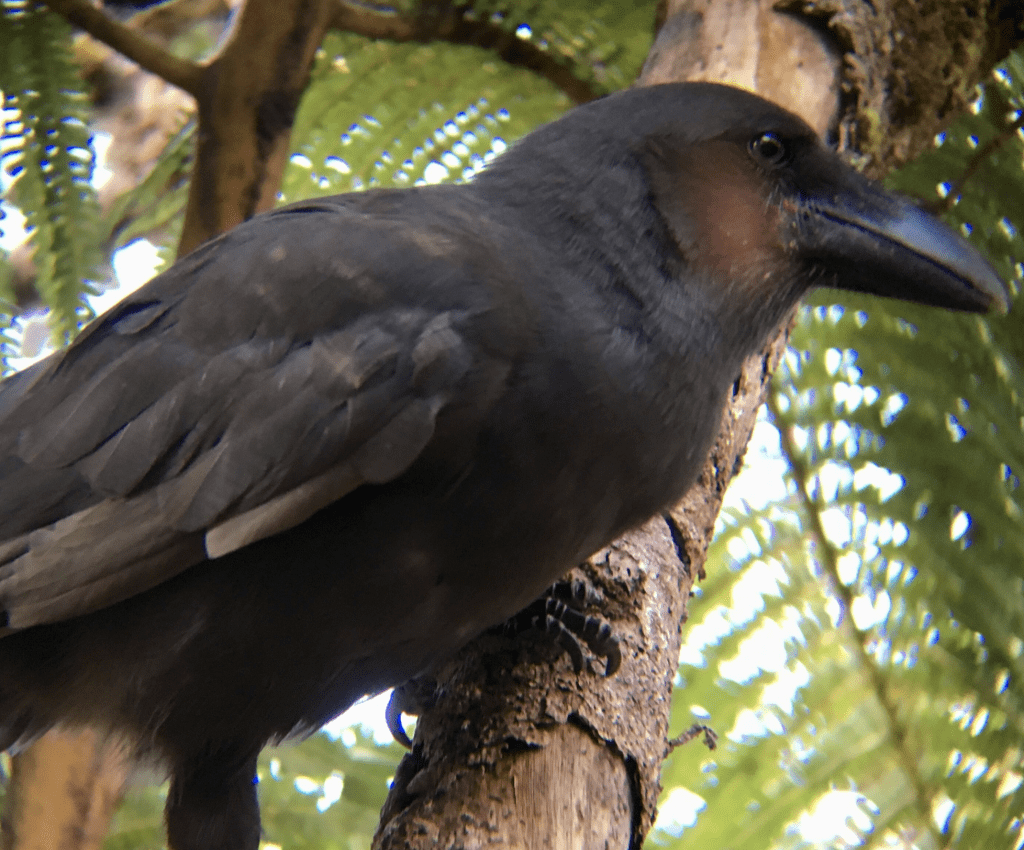Attempt to re-introduce the Hawaiian crow in the wild gets green light in east Maui

ʻAlalā are native Hawaiian crows. An earlier species re-introduction project on Hawai‘i Island was halted, largely because the native Hawaiian hawk (‘io), their natural predator, was preying on the birds. While ʻalalā were last known to exist on Hawai‘i Island there is subfossil evidence of a Corvid (crow family) species on both Maui and Moloka‘i, according to DLNR.
For Maui releases, the DLNR and USFWS identified the project area through a collaborative process that evaluated eight sites on Maui and Moloka‘i. Since Maui Nui does not have a breeding population of ‘Io, researchers are hopeful releasing ʻalalā on Maui will be successful.
In its submittal to the BLNR, the DLNR Division of Forestry and Wildlife indicated the preferred alternative is to release ʻalalā in the Kīpahulu Forest Reserve for the first release effort to minimize potential impacts to rare snails and other native species. The environmental analysis also addressed potential impacts to other threatened and endangered plants and animals, to cultural, recreational and wilderness resources, and to public health and safety, air quality, climate change, and environmental justice.
The interdisciplinary team consulted with scientific experts and environmental partners from DLNR, USFWS, the National Park Service, and the San Diego Zoo Wildlife Alliance. Released birds would come from the captive population of 120 birds. The birds are housed at two conservation breeding facilities managed by SDZWA on Maui and Hawaiʻi Islands.